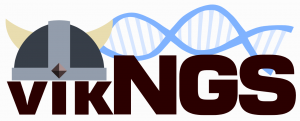Software
Roper is a R package for differential expression analysis of RNA-Seq using robust profile likelihood method.
The goal of roper is to accurately detect differentially expressed genes in the presence of unknown forms of additional variation that remains in the RNA-Seq read count.
Access the package and get updates | ROPER
VikNGS is a freely available, user friendly C++ package that uses the RVS methodology to remove the bias in genetic association due to differences in sequencing parameters when combining external NGS data. VikNGS now enables RVS analysis that adjusts for covariates, conducts flexible power analyses and enables combination of NGS from multiple groups for both quantitative and binary trait analysis.
Reference:
Zeynep Baskurt, Scott Mastromatteo, Jiafen Gong and Lisa Strug
VikNGS: A C++ Variant Integrating Kit for Next Generation Sequencing across Research studies for robust rare and common variant association analysis
Derkach, A et al.
Association Analysis Using Next Generation Sequence Data from Publicly Available Control Groups: The Robust Variance Score Statistic.
Bioinformatics 30 (15): 2179-2188 first published online April 14, 2014. PMID:24733292
Baskurt, Z et al.
VikNGS: A C++ Variant Integration Kit for Next Generation Sequencing Association Analysis.
Bioinformatics Advance publication date: 3 October 2019. PMID:31580400
The robust variance score (RVS) is a novel likelihood-based method for genetic association with NGS data from external control groups. RVS substitutes genotype calls by their expected values given observed sequence data and implements a robust variance estimate for the score statistic.
Reference:
Derkach, A et al.
Association Analysis Using Next Generation Sequence Data from Publicly Available Control Groups: The Robust Variance Score Statistic.
Bioinformatics 30 (15): 2179-2188 first published online April 14, 2014. PMID:24733292
To install in R, simply run the following commands:
install.packages(“devtools”)
library(devtools)
install_github(‘Struglab/RVS’)
Evidential Analysis of Genetic Association Data.
The evidential approach employs the Law of Likelihood, and uses the LR (likelihood ratio) rather than p-values to plan/design, analyze, interpret and replicate genetic association studies. Here is a R package that implements the evidential approach to analyze genetic association SNP data.
Reference:
Strug, L.J et al. A pure likelihood approach to the analysis of genetic association data: an alternative to Bayesian and frequentist analysis.
EJHG. Epub Apr 28, 2010. PMID: 20424645
R package
version 1.0.0 (Mar 19, 2010): evian_1.0.tar.gz.
version 1.0.1 (Apr 13, 2010): evian_1.0.1.tar.gz. (w/robust, mle inversion fix, 2df plot title fix)
version 1.0.2 (Apr 15, 2010): evian_1.0.2.tar.gz. (robust example in vignette/demo, listterms length fix, as.vector() for char covariates fix)
version 1.1.0 (May 6, 2010): evian_1.1.0.tar.gz. (with linear regression functions). Online Documentation.
version 1.1.0 (May 17, 2010): evian_1.1.0.zip. (For windows). Online Documentation.
version 2.0.0 (Mar. 30, 2018): evian_2.0.0.tar.gz available on CRAN. (NEW with parallel processing ability with support for Mac, Windows and Linux).
Reference:
Weili Li, Sara Dobbins, Ian Tomlinson, Richard Houlston, Deb Pal, Lisa Strug.
Prioritizing Rare Variants with Conditional Likelihood Ratios. Human Heredity 2015. PMID: 25659987
R code
R-codes and Sample data for ‘The analysis of correlated binary data in genetic association studies: direct inference using the composite likelihood ratio’
can be downloaded below.
Here is the R script used for the Simple Sum method in PLoS Genetics 2018.
Our our web tool, Locus Focus, may be accessed to apply the Simple Sum method to GWAS summary statistics. Full documentation for the Simple Sum tool is also available.
LocusFocus is a web application to facilitate the exploration of a GWAS signal at a particular locus of the genome and its degree of colocalization with any SNP-level association data (e.g. expression quantitative trait loci for genes within +/- 1Mbp in the relevant GTEx tissues selected).
When paired with GTEx data, the aim is to annotate a GWAS (or region-based association) to the most probable gene(s) and tissue(s) that may be driving the observed GWAS signal.
In addition, users may upload other datasets to test colocalization with. For example, other phenotypic associations (i.e. PheWAS) may be uploaded for assessing pleiotropy, or eQTL data from other sources to obtain a formal colocalization test and visualization of the data.
The Simple Sum method is used for assessing the degree of colocalization of any two given datasets. When applied to GTEx, LocusFocus presents the degree of colocalization of genes nearby the GWAS association for all the tissues selected in an interactive heatmap plot.
COLOC2 colocalization testing is also available, and more colocalization methods may be made available in future version releases.
For more information, checkout the documentation page for LocusFocus.
Resources
Summary statistics from the Genome-wide association study of Meconium Ileus from the International CF Gene Modifier Consortium in Nature Genetics 2012 can be downloaded below.
README
GWAS1 Summary Statistics (indexed with tabix)
README
GWAS Summary Statistics
A covariance matrix for the association region around MUC4 and corresponding SNP list:
MUC4 covariance matrix
Here is the webtool for Canadian FEV1 CF-Specific Percentiles.
Summary statistics from the GWAS of Meconium Ileus (2019) from the International CF Gene Modifier Consortium can be downloaded below.
GWAS Summary Statistics (indexed with tabix)
README
Summary statistics from for the BIOJUME GWAS on BIS can be downloaded below.
GWAS Summary Statistics (indexed with tabix)
README
Summary statistics from the GWAS of PsA (2024) from the Canadian CF Gene Modifier Consortium can be downloaded below.


